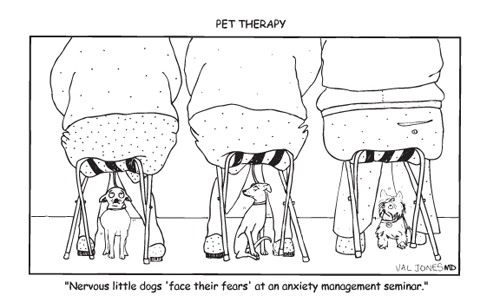 |
| Picture 1 |
Behavior therapy is focused on helping an individual understand how changing their behavior can lead to changes in how they are feeling. The goal of behavior therapy is usually focused on increasing the person’s engagement in positive or socially reinforcing activities. Behavior therapy is a structured approach that carefully measures what the person is doing and then seeks to increase chances for positive experience. Common techniques include:
Self-Monitoring — This is the first stage of treatment. The person is asked to keep a detailed log of all of their activities during the day. By examining the list at the next session, the therapist can see exactly what the person is doing.
Schedule of Weekly Activities — This is where the patient and therapist work together to develop new activities that will provide the patient with chances for positive experience.
Role Playing — This is used to help the person develop new skills and anticipate issues that may come up in social interactions.
Behavior Modification — In this technique the patient will receive a reward for engaging in positive behavior.
Who are the developers of Behavior Therapy?
 |
Albert Bandura
(1925)
|
Albert Bandura discovered the term “observational learning” by conducting the famous “Bobo Doll” experiment and concluding that people imitate other people reactions even when there is no outside stimulus or reward.
 |
B.F Skinner
(1904-1990)
|
Therapeutic Techniques
· Relaxation Training – to cope with stress
· Systematic Desensitization – for anxiety and
avoidance reactions
· Modeling – observational learning
· Assertion Training – social-skills training
· Self-Management Programs – “giving
psychology away”
· Multimodal Therapy – a technical eclecticism
 |
| Picture 4 |
B = Behavior
· Refers primarily to overt behaviors, including acts, habits, &
reactions that are observable & measurable
· What would you like to change?
· What specific behaviors keep you from getting what you want?
A = Affective responses
· Refers to emotions, moods, & strong feelings
· What emotions are problematic for you?
S = Sensations
· Refers to 5 basic senses (touch, taste, smell, sight & hearing)
· Do you suffer from unpleasant sensations e.g., pains, aches,
dizziness etc.?
I = Images
· Refers to ways we picture ourselves (including memories, dreams &
fantasies)
· How do you view your body?
C = Cognitions
· Refers to insights, philosophies, ideas, opinions, self-talk, & judgments that
constitute basic values, attitudes, & beliefs
· How do your thoughts affect your emotions?
· What are the values & beliefs you most value?
I = Interpersonal relationships
· Refers to interactions with other people
· To what degree to you desire intimacy with others?
· What do they expect from you?
D =Drugs, biological functions, nutrition, & exercise
· Includes more than drugs, encompassing clients’ nutritional & exercise
patters
· Are you healthy & health conscious?
· Do you have any concerns about your health?
· What are your habits pertaining to diet, exercise, & physical fitness?
 |
| Picture 5 |
What are the Goals of Behavior Therapy?
· General goals are
o To increase personal choice &
o To create new conditions for leaning
· Client, with help of therapist, defines specific goals at
outset of therapeutic process
· Once goals are agreed upon, a process of defining
begins
Counselor & client discuss the behaviors associated with
goals, the circumstances required for change, the nature of
subgoals, to reconsider client’s initial goals, or to seek
services of another practitioner
 |
| Picture 6 |
References:
Picture 1
(nd) Retrieved from: http://www.mindfulnessmuse.com/category/dialectical-behavior-therapy
Picture 2
(nd) Retrieved from: http://moraldisengagement.com/about/?page=about
Picture 3
(nd) Retrieved from: http://ellier77.wordpress.com/2010/02/28/how-did-we-get-this-far/
Picture 4
(nd) Retrieved from: http://www.getbetterhealth.com/wp-content/uploads/2009/06/pettherapy.jpg
Picture 5
(nd) Retrieved from: http://askthecognitivebehaviortherapist.com/blog/
(nd) Retrieved from: http://www.getbetterhealth.com/wp-content/uploads/2009/06/pettherapy.jpg
Picture 5
(nd) Retrieved from: http://askthecognitivebehaviortherapist.com/blog/
No comments:
Post a Comment